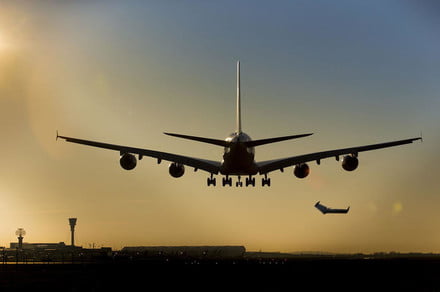The U.K.’s Heathrow airport has installed an advanced drone detection system to help it pinpoint unauthorized remotely-controlled aircraft flying into its airspace.
The move follows repeated incursions into the airport’s airspace in recent years, including efforts by environmental activists who tried to force the airport’s temporary closure in September 2019 as part of a climate-change protest. It also comes after a costly incident at nearby Gatwick airport in 2018 when suspected drone sightings prompted the airport’s operator to suspend all incoming and outgoing flights for 30 hours. No one has ever been charged in connection with the incident.
London Heathrow, the U.K.’s busiest airport, is using a system developed by Cambridge-based Aveillant and Reading-based Operational Solutions that utilizes specially developed Holographic Radar technology to detect unauthorized flying objects that come close to the transportation hub. The system offers real-time, three-dimensional surveillance of the targeted airspace through the use of a modular array that can be set up to match the airport requirements of range and coverage, according to the company. The technology, which is also being used at Paris’s Charles de Gaulle airport, has the added capability of locating the drone pilots themselves, enabling the airport’s security team to respond quickly in person.
The system doesn’t have the ability to disable rogue drones, according to Bloomberg, suggesting that Heathrow has other equipment in place capable of such functionality.
“This new kit will enhance detection capabilities and minimize delays, helping passengers to get away on time,” Aveillant said in a release. “The technology will also help the airport to meet its sustainability objectives, by reducing the fuel wastage and additional flight stacking caused by unauthorized drones use.”
Legislation introduced in the U.K. in March 2019 extended the ban on unauthorized drones from 1 km (0.62 miles) to 5 km (3.1 miles) of an airport’s boundary. Drone operators who break the law and fly without permission in a restricted zone can face a prison sentence of up to five years, though a fine could also be handed out. A man convicted of flying a model airplane within 500 meters of Heathrow at the end of 2018, for example, escaped jail but was hit with a fine of 2,000 British pounds (about $2,600).
“The safety and security of our passengers and colleagues is our number one priority — that is why we’re investing in this new cutting-edge technology which will enhance our capabilities in the detection and deterrence of drones in and around our airfield,” Jonathan Coen, director of security for Heathrow airport, said in a release. “We’re delighted to have this unique system keeping our skies safe and helping passengers and cargo to get to their destinations on time.”

